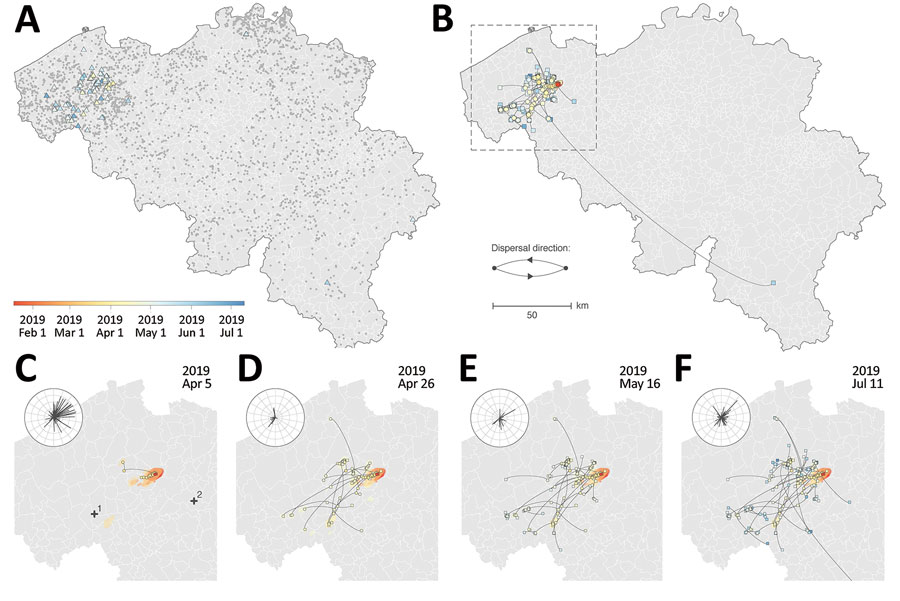Volume 29, Number 2—February 2023
Research
Combined Phylogeographic Analyses and Epidemiologic Contact Tracing to Characterize Atypically Pathogenic Avian Influenza (H3N1) Epidemic, Belgium, 2019
Figure 1

Figure 1. Spatiotemporal dispersal history of H3N1 lineages in study combining phylogeographic analyses and epidemiologic contact tracing to characterize the atypically pathogenic avian influenza (H3N1) epidemic in Belgium during 2019. A, B) We mapped the spatiotemporal distribution of H3N1 outbreaks (triangles) among the distribution of Belgian poultry farms (gray dots) (A) and the maximum clade credibility tree obtained by continuous phylogeographic inference on the basis of 1,000 posterior trees (B). The tree is superimposed on 80% highest posterior density polygons reflecting phylogeographic uncertainty associated with inferred positions of internal nodes. Tip (squares) and internal (circles) nodes are displayed, and dispersal direction of viral lineages is indicated by the edge curvature (anticlockwise). Outbreaks, tree nodes, and highest posterior density regions are all colored according to their date of occurrence. C–F) Four snapshots of the area shown in the box in panel B, which display the dispersal history of H3N1 lineages through time and on which we coplotted the wind direction and intensity (length of line, not used for hypothesis testing) recorded for the days in each period. The period was defined as the time between the date of the previous snapshot and the date of the snapshot under consideration. Wind direction and intensity were averaged measurements taken at 2 meteorological stations (1, Beitum; 2, Melle). A visual comparison between the time-scaled tree and the phylogeographic reconstruction is provided in Appendix.
1These first authors contributed equally to this article.